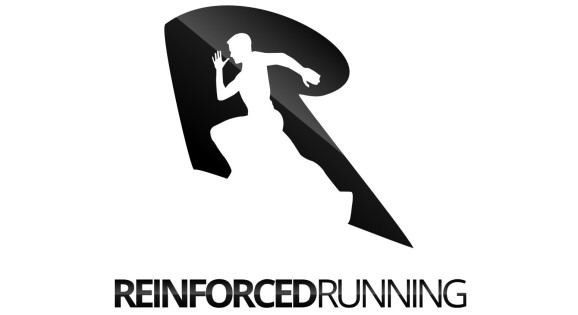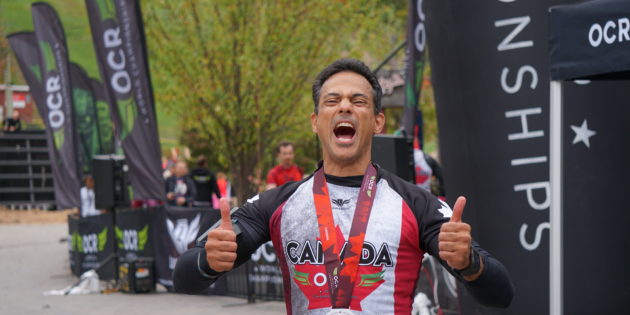The Spartan Race is arguably the most brutal Obstacles Course Race (OCR) series. It is unique, arduous, and downright painful. They are designed to make us feel uncomfortable for a reason. It turns out that we love to do hard things.
In today’s culture, things are not that bad. Yes, everyone has their struggle, but chances are you face first world problems like slow internet or organic food expenses. But having the internet and food are both awesome.
People are rebelling against the ease of modern society. We want to push ourselves. We pine for things to be hard.
Spartan Race has made it easy for us to struggle. Finishing a Spartan race is an accomplishment. But the lasting effects of a Spartan Race comes with the training and preparation. You need to prepare for race day with diligence in the gym and on the trails.
In this article, you will learn how to best prepare to for your next Spartan race.
The Spartan Race has several distances. Each race will have a unique training focus to determine volume and intensity. For the sake of ease, this article will default to the “super” distance which is 7-10 miles. When you prepare for a super, you can easily adjust your training to move down to a “sprint” or up to a “beast.”
Here are the three things you need to do to help you perform in a Spartan race.
Improve your running to dominate the course.
During any foot race, your foot speed will be the make or break factor in your success. So you have to run.
It is crucial to add volume to your running.A Spartan Race will take a long time. Even the fastest athletes will take over an hour in the super distance which is roughly equal to a half marathon distance on the road.
Your aerobic capacity is critical for race day. The best way to improve your aerobic capacity (AC) is by doing longer easy miles. Progress your mileage by 10% each week during your training to safely add miles.
Run your easy mileage easy; faster is not better.
Your aerobic runs need to be done at a sustainable pace so that you can maximize the time spent on your feet. Going hard will increase fatigue and force you to slow or stop too soon. Keep things easy to get big running gains.
Hill training to improve your race day performance
A Spartan race is typically held at venues with a heavy dose of incline. Most of the races turn into a mountain or trail race. You can expect to get 2-5k of elevation gain.
Improving your climbing strength will yield results. So you need to do them, even if they suck.
Don’t have hills? Find a treadmill.
Read more on how to improve your hill training on flat land here.
You can do quality work on a treadmill.
Is it fun? No.
Will it make you an ass kicker on the course. Yes.
Begin your hill training with a baseline test of 15 min @ 15% incline. Log your total distance, and now you have a measure to test yourself against after a few weeks of training.
Tackle technical terrain to keep up with the field.
During a Spartan Race, you will run through nasty terrain. Sometimes there is no trail at all, and you need to blaze your own. Getting into your typical running rhythm is difficult. So getting on trails during training is crucial.
Make a point to spend time on trails doing your quality work. Your quality trail runs can be tempo runs at half-marathon pace or doing downhill repeats.
Moving quickly through trails is a learnable skill. The practice of technical running will improve your confidence to run fast and the courage to go for it.
Running hard on a trail can be scary. You are watching each step hoping not to fall, but you will sacrifice minutes to your total time if you are too cautious.
Spend time working trails with nasty footing and sharp downhills.
Improve your “crush” grip strength to avoid burpees.
During a Spartan Race, there are several obstacles to test your grip. But unlike other race series (savage, OCRWC, etc.) you will have time for your grip to recovery between obstacles. The recovery time makes your grip power more advantages than grip endurance.
The obstacles are also not that long. The rig, monkey bars, and twister are difficult, are rarely long enough to reach muscle failure.
Chances are you will “slip” off obstacles because you lack the brute force to clamp your hands on a bar or ring.
Your hands will also limit strength and pulling obstacles like the “Herc hoist” and “plate drag.” Your hands slipping through the rope will be more limiting than your back strength. So being able to clamp your hands down HARD will keep you out of the burpee zone.
Once you improve your crush grip strength, you can move onto working endurance with things like long-dead hangs or transitions through obstacles.
Here are four of my favorite crush grip workouts.
Since Arm Hangs
Towel Hangs
Grip trainer/Isometric holds
Pinch Grip farmers walk
Practice fast carries and quick transitions.
The most polarizing piece of the Spartan Race is the carries. They are heavy and brutal. A major gripe about Spartan Race is that a “bucket carry” really isn’t an obstacle. But that’s what makes Spartan Race so unique. It will force you out of your comfort zone to the point where you will not want to participate. It will push you to do things that suck. And carries suck.
A mistake that many OCR athletes make during training for is spending too much time in the gym and overloading their carry objects. What you need to do is work on your speed with the and your comfort in moving with a heavy object while fatigued.
Strength will help a novice lifter, but the buckets and sandbags in a race are not that heavy. Anyone can lift the objects in a gym setting or when they are fresh. So making a bucket won’t help as much as you hope.
You need to focus on speed. Building a progression to help you carry speed will teach you how to move the object quickly. Doing short bursts of fast carries with equal rest will help you build a better carry.
Workout example:
10 x 30 seconds carry as fast as possible 30-60 second rest
– Each week you can increase your volume by increasing sets or rep distances.
After you learn speed with you, carry you can move into race-specific workouts that will help you learn how to transition in and out of a carry.
You won’t gain a ton of time during a carry. Everyone will be relatively slow. But a carry can kill your race if you are slow to transition into your running, rest too often during the carry, or become mentally defeated. So you need to practice.
Working carries into your running workouts will pay off on course.
Workouts EX
3-5 minutes at half marathon pace
3 min heavy carrying your object for
3-5 min @ half marathon pace
– Rest three mins
Auxillary workout for overall strength.
During the season, it is helpful to add 1-2 days of baseline strength work. Compound and single leg moves will give you the best bang for your buck when it comes to strength. Lunges, Squats, and deadlifts should be the main go-tos to help your carries.
Race-specific workouts to put it all together.
It is essential to work on all three of these pieces individually. Give yourself time to spend on each of them to improve your working threshold. Once you feel proficient in the workout, you can begin to blend the stimulus to give you a more realistic race day experience. But hoping into a hard workout that has carries, grip work, and running will steer you in the direction of overtraining and injury. So prepare for the strength and endurance elements of a race before you jump into race-specific workouts.
Training for a Spartan Race can be complicated and lead to overtraining. There are high demands and many elements to improve. You need to focus on three things to make gains.
Your running, crush grip strength, and carry speed will be a game changer for you on race day. There is an excitement about putting together complicated workouts that will replicate your race. But doing simple workouts will always lead to better results.

